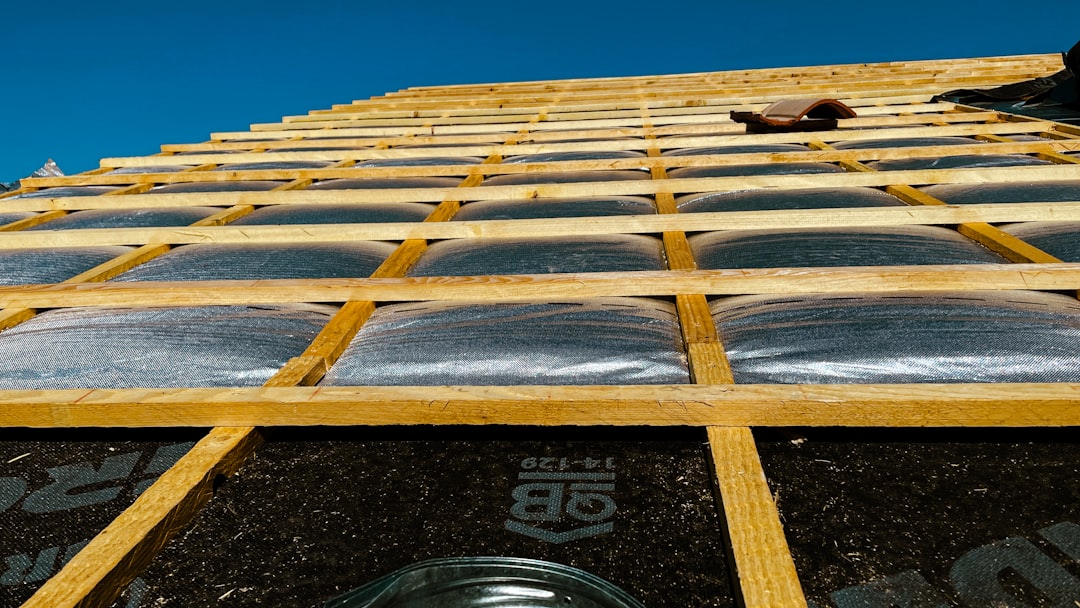Why SEO for Roofers is Crucial in a Competitive Market
SEO for roofers is the best way for roofing companies to stand out and attract local customers. With over 70% of people researching online before choosing a service, having a strong online presence is more important than ever.
Here’s what this guide will cover:
- Understanding what SEO for roofers is
- Benefits of SEO for roofing companies
- How to get started with SEO
- Step-by-step SEO process
- Local SEO essentials
- Measuring SEO success
In the highly competitive roofing industry, the ability to rank well on search engines can mean the difference between a thriving business and one that struggles to get by. Good SEO practices can help your roofing company appear higher in search results, driving more qualified leads to your site, building trust with potential customers, and yielding long-term benefits.
I’m Danielle Birriel, founder and SEO expert at D&D SEO Services. With over a decade of experience, I specialize in seo for roofers and small business SEO strategies. My goal is to empower local roofing businesses to succeed online.
What is SEO for Roofers?
SEO for roofers is all about making your roofing company’s website more visible to potential customers through search engines like Google. When people search for roofing services, you want your business to pop up first. This helps you get more visitors to your site and, ultimately, more customers.
Definition
SEO stands for Search Engine Optimization. For roofing companies, it means tweaking your website and its content to rank higher in search engine results pages (SERPs) for keywords related to roofing. Think of it as making your site more attractive to Google so that it shows up when someone looks for roofing services.
Benefits of SEO for Roofers
SEO offers several benefits for roofing companies:
-
Drive More Qualified Traffic: When your site ranks high, more people looking for roofing services will click on it. This means more leads and potential customers.
-
Build Brand Recognition and Trust: Showing up at the top of search results makes your business look more credible. People trust companies that appear on the first page of Google.
-
Reap Long-Term Results: Unlike paid ads that stop working once you stop paying, good SEO keeps bringing in traffic over time. A well-optimized blog post about “common causes of roof leaks” can keep driving visitors for months or even years.
-
Cost-Effective Marketing: SEO is a cost-effective way to market your business. Once your site is optimized, it requires less ongoing investment compared to other forms of advertising.
Search Engine Results and Online Presence
When someone searches for a roofing service, they usually look at the first few results. If your website is among these top results, you’re more likely to get clicks and business. This is why SEO is crucial. It helps you climb the search rankings and get noticed.
Fact: Over 70% of people research a company online before choosing them. This means having a strong online presence is essential for attracting new customers.
How SEO Works
SEO involves several steps:
-
Keyword Research: Identify the terms people use when searching for roofing services. For example, “roof repair” or “metal roofing.”
-
On-Page Optimization: Make changes to your website to improve its ranking. This includes optimizing meta titles, meta descriptions, and header tags.
-
Content Creation: Publish useful content that answers common roofing questions. This helps establish your business as an authority in the field.
-
Link Building: Get other reputable websites to link back to your site. This signals to Google that your content is valuable and trustworthy.
By following these steps, you can improve your search engine rankings and attract more visitors to your site.
In the next section, we’ll dive into how to get started with SEO for roofing companies, including tips on keyword research, on-page optimization, and more.
Benefits of SEO for Roofing Companies
Drive Qualified Traffic
SEO helps you attract visitors who are actively searching for roofing services. These visitors are more likely to convert into leads and customers. Over 70% of people research a company online before choosing them. When your site ranks high in search results, you can capture this audience and drive qualified traffic to your site.
Build Brand Recognition and Trust
Appearing at the top of search results signals to potential customers that you are a trusted and relevant player in the industry. High rankings help build brand recognition and trust. This makes it more likely that people will choose your services over competitors.
Reap Long-Term Results
One of the biggest benefits of SEO is its longevity. Unlike paid ads, which stop delivering results once you stop paying, a well-optimized website continues to attract traffic and generate leads over time. For instance, a high-quality blog post about common roofing issues can keep driving traffic for years with no extra effort. This makes SEO a sustainable and long-term strategy for growth.
Cost-Effective Marketing
SEO is one of the most cost-effective marketing strategies. While it requires an upfront investment in time and resources, the ongoing costs are relatively low compared to traditional advertising methods. Over time, the cost per lead generated through SEO decreases, offering a higher return on investment (ROI).
High ROI
SEO provides a high return on investment for roofing companies. By targeting specific keywords and optimizing your website, you attract highly relevant traffic that is more likely to convert. The money you spend on SEO can yield significant returns in the form of new customers and increased revenue.
In the next section, we’ll dive into how to get started with SEO for roofing companies, including tips on keyword research, on-page optimization, and more.
How to Get Started with SEO for Roofing Companies
Getting started with SEO for roofers can feel overwhelming, but breaking it down into manageable steps can make it easier. Here’s a simple guide to help you begin:
1. Conduct Keyword Research
Keyword research is the foundation of any successful SEO strategy. It involves finding the right words and phrases potential customers use when searching for roofing services.
Use tools like KeywordsFX or keywordtool.io to identify keywords with high search volume, low competition, and reasonable cost-per-click (CPC).
Types of Keywords:
- High-Intent Keywords: These are used by people ready to hire a roofer, like “roofing contractors near me.”
- Informational Keywords: Used by people researching, such as “black roof shingles pros cons.”
Pro Tip: Aim for a minimum of 700 words per page to provide valuable information. Google loves comprehensive content.
2. Optimize On-Page Elements
On-page optimization involves tweaking elements on your website to improve your search rankings.
Key On-Page Elements:
- Meta Titles and Descriptions: Include your primary keywords to help search engines understand your page content.
- Header Tags (H1, H2, etc.): Use keywords in your headers to make your content easier to read and more SEO-friendly.
- Internal Links: Link to other relevant pages on your site to keep visitors engaged and improve SEO.
Example: Bill Ragan Roofing Company uses an interactive quiz to help users choose the right roofing material, making their site more engaging.
3. Create Quality Content
Creating high-quality content is crucial for SEO. It helps you build authority and attract more visitors.
Content Ideas:
- Blog Posts: Compare DIY roof replacement vs. professional services.
- Videos: Show how to know when you need to replace your roof.
- Infographics: Detail the pros and cons of different roofing materials.
Fact: Companies with blogs generate 67% more leads per month than those without.
4. Build Backlinks
Link building is about getting other reputable websites to link back to your site. This shows search engines that your content is valuable.
Effective Link-Building Strategies:
- Guest Posts: Write articles for other sites in exchange for a backlink.
- Local Directories: Get listed in local business directories.
- Sponsorships: Sponsor local events or organizations for backlinks.
Note: Regularly check for bad links and disavow them to avoid penalties.
5. Optimize Technical SEO
Technical SEO ensures that your website is easy for search engines to find, crawl, and index.
Key Technical SEO Elements:
- Site Speed: Ensure your website loads quickly.
- Mobile-Friendliness: Optimize your site for mobile devices.
- Crawlability: Make sure search engines can easily crawl your site.
- Schema Markup: Use structured data to help search engines understand your content.
Example: Regularly update your XML sitemap to help search engines steer your site more efficiently.
Next, we’ll explore the importance of local SEO for roofing companies, including tips on optimizing your Google Business Profile and targeting geo-specific keywords.
Step-by-Step SEO Process for Roofing Companies
Step 1: Conduct Keyword Research
Keyword research is the foundation of any successful SEO for roofers strategy. It helps you understand what potential customers are searching for and how to target those searches.
Keyword Tools:
- KeywordsFX
- Keywordtool.io
These tools provide valuable data on search volume, competition, and cost-per-click (CPC).
Search Volume: This shows how often a keyword is searched. High search volume means more potential traffic.
Keyword Variations: Look for different ways people might search for the same thing. For example, “roof repair” and “roofing repair” might seem similar but can have different search volumes.
Related Keywords: These are terms related to your main keywords. If you’re targeting “roofing contractors,” related keywords might include “roofing services” or “roof repair specialists.”
Step 2: Optimize On-Page Elements
Once you have your keywords, it’s time to optimize your on-page elements.
Meta Titles: Your meta title should include your main keyword. It’s the first thing people see in search results.
Meta Descriptions: These should be concise and include your main keyword. They give a brief summary of your page.
Header Tags: Use H1, H2, and H3 tags to break up your content. Your H1 tag should include your main keyword.
Internal Links: Link to other pages on your site. This helps keep visitors on your site longer and improves SEO.
Example: A roofing company might use the meta title “Top Roofing Contractors in Harrisburg, PA” and a meta description like “Looking for reliable roofing contractors in Harrisburg, PA? We offer expert roof repair and installation services.”
Step 3: Create Quality Content
Content is crucial for SEO for roofers. It helps you rank higher and provides value to your visitors.
Blog Posts: Write about topics like “DIY Roof Repair vs. Professional Services” or “How to Choose the Right Roofing Material.”
Videos: Create videos on “How to Know When You Need a New Roof” or “Roof Maintenance Tips.”
Infographics: Visual content like infographics can explain complex topics simply. For example, an infographic on “Types of Roofing Materials and Their Pros and Cons.”
Service Pages: Make sure each service you offer has its own page. This helps you rank for specific keywords related to each service.
Step 4: Build Backlinks
Backlinks from reputable websites show search engines that your content is valuable.
Guest Posts: Write articles for other websites in your industry. Include links back to your site.
Local Directories: List your business in local directories. This helps with local SEO and provides backlinks.
Sponsorships: Sponsor local events or charities. They often link back to your site.
Authoritative Sites: Aim to get links from high-authority sites. This can significantly boost your SEO.
Example: A roofing company might write a guest post for a home improvement blog and include a link to their site.
Step 5: Optimize Technical SEO
Technical SEO ensures that search engines can easily find, crawl, and index your site.
Site Speed: Make sure your website loads quickly. Slow sites can hurt your rankings.
Mobile-Friendliness: Optimize your site for mobile devices. More people are using their phones to search.
Crawlability: Ensure search engines can easily crawl your site. Use an updated XML sitemap.
Schema Markup: Use structured data to help search engines understand your content better.
Example: Regularly update your XML sitemap to help search engines steer your site more efficiently.
Next, we’ll explore the importance of local SEO for roofing companies, including tips on optimizing your Google Business Profile and targeting geo-specific keywords.
Local SEO for Roofing Companies
Local SEO is all about making sure your roofing business shows up when people search for services in your area. Here’s how to do it:
Google Business Profile
Google Business Profile (formerly Google My Business) is a free tool that puts your business on the map—literally. When someone searches for “roofing services near me,” your Google Business Profile listing can appear in the local pack, which is the map and list of businesses at the top of search results.
Steps to Optimize Your Google Business Profile:
- Claim and Verify Your Listing: Make sure you claim your business on Google and verify it. This adds credibility.
- Complete Your Profile: Fill out every section of your Google Business Profile, including business name, address, phone number (NAP), hours of operation, and services offered.
- Add Photos and Videos: High-quality images and videos of your work can attract more customers.
- Collect Reviews: Encourage satisfied customers to leave reviews. Positive reviews boost your ranking and trustworthiness.
Local Citations
Local citations are mentions of your business on other websites, usually in the form of your NAP information. These citations help search engines verify your business’s existence and credibility.
Where to List Your Business:
- Local Directories: Ensure your business is listed on local directories like Yelp, Yellow Pages, and the Better Business Bureau.
- Industry-Specific Directories: Use tools like Whitespark or BrightLocal to find relevant citation sources specific to roofing services.
- Consistency is Key: Make sure your NAP info is consistent across all listings. Inconsistent information can hurt your rankings.
Geo-Targeted Keywords
Using geo-targeted keywords helps you attract local traffic. These keywords include your service and location, making it easier for local customers to find you.
Examples of Geo-Targeted Keywords:
- “Roof Repair Cleveland, OH”
- “Metal Roofing Company near Cleveland, OH”
- “Emergency Roof Repair Cleveland, OH”
Even though search volume might decrease with long-tail keywords, the conversion rate usually increases. This is because someone searching for “metal roofing repair in Cleveland, OH” is likely ready to hire now.
Local Backlinks
Backlinks are links from other websites to yours. They are crucial for SEO because they signal to search engines that your site is trustworthy and authoritative.
How to Get Local Backlinks:
- Foundational Links: List your roofing business in trusted business directories like Angie, Thumbtack, and Home Advisor.
- Local Sponsorships: Sponsor local events or donate to local organizations. These often come with a backlink.
- Guest Posting: Write guest posts for local blogs or news sites. These posts can link back to your website.
Next, we’ll dive into Measuring SEO Success for Roofing Companies, including key performance indicators (KPIs) and tracking ROI.
Measuring SEO Success for Roofing Companies
To know if your SEO efforts are working, you need to measure success. Here are some key performance indicators (KPIs) and tools to help you track your progress:
Key Performance Indicators (KPIs)
1. Search Rankings
Tracking your search rankings is crucial. This tells you where your website appears on search engine results pages (SERPs) for your targeted keywords. For instance, if you’re targeting “roofing contractors in Harrisburg PA,” you want to be on the first page of Google.
Tools: SEMrush, Moz, and Ahrefs can help you monitor your rankings over time.
2. Organic Traffic
Organic traffic refers to visitors who find your website through search engines without clicking on ads. Increasing organic traffic means your SEO efforts are paying off.
Tools: Use Google Analytics to track how many visitors come from organic search and which keywords they used.
3. Conversion Rate
Conversion rate measures how many of your website visitors take a desired action, such as filling out a contact form or calling your business. A higher conversion rate indicates that your site is effectively turning visitors into leads.
Tools: Google Analytics can track these conversions for you.
4. New Leads
Keep an eye on the number of new leads generated from your website. This could be through contact forms, phone calls, or email sign-ups. More leads mean more potential customers.
Tools: Tools like CallRail can help track phone call leads, while Google Analytics can monitor form submissions.
5. Time on Site/Bounce Rate
These metrics show how engaging your content is. Time on site indicates how long visitors stay on your website, while bounce rate shows the percentage of visitors who leave after viewing only one page. Lower bounce rates and longer times on site are positive signs.
Tools: Again, Google Analytics is your go-to tool for this data.
Tracking Tools
1. Google Analytics
This free tool is essential for tracking organic traffic, conversion rates, and user behavior. It provides insights into how visitors interact with your site, which pages are most popular, and where improvements are needed.
2. Google Search Console
Google Search Console helps you monitor your website’s performance in Google search results. It provides data on search queries, clicks, impressions, and any issues Google encounters when crawling your site. This is invaluable for maintaining and improving your search rankings.
3. Rank Tracking Tools
Tools like SEMrush, Moz, and Ahrefs allow you to track your keyword rankings and see how they change over time. They also provide insights into your competitors’ rankings.
4. Backlink Monitoring Tools
Backlinks are crucial for SEO. Tools like Ahrefs and Moz can help you monitor your backlink profile, identify new backlinks, and spot any harmful links that need disavowing.
5. Google Business Profile Insights
For local SEO, Google Business Profile Insights provides data on how often your business appears in local searches, how many clicks you get, and how often people request directions or call you. This data is vital for optimizing your local SEO strategy.
ROI Tracking
Understanding the return on investment (ROI) of your SEO efforts is crucial. This involves comparing the cost of your SEO activities to the value of the leads and sales generated.
Tools: MarketingCloudFX is an industry-leading platform for ROI tracking. It provides insight into the leads generated from your roofing company’s SEO strategy by tracking calls generated from your webpages. Plus, it offers tips on potential keywords for your website.
By consistently monitoring these KPIs and using the right tools, you can ensure your SEO for roofers strategy is on track and making a positive impact on your business.
Next, let’s dive into some Frequently Asked Questions about SEO for Roofers, where we’ll address common queries like whether SEO works for roofing businesses and how much you should pay for SEO services.
Frequently Asked Questions about SEO for Roofers
Does SEO work for roofing business?
Absolutely! SEO for roofers is highly effective. When people need roofing services, they often turn to search engines like Google. In fact, over 70% of people research a company online before choosing them. By optimizing your website for relevant keywords like “roof repair” or “shingle replacement,” you can rank higher in search results and attract more qualified leads.
For example, a blog post about “common causes of roof leaks” can continue to drive traffic for months or even years if it ranks well. This means continuous, long-term results for your business without additional effort.
How much should I pay someone for SEO?
The amount a roofing company should spend on SEO can vary, but a good rule of thumb is to allocate around 5-10% of your annual revenue for overall marketing. Investing in SEO for roofing companies specifically can provide a high return on investment (ROI). For instance, D&D SEO Services offers packages starting at $699, which can be a cost-effective way to boost your online presence and attract more customers.
How can I promote my roofing business?
Promoting your roofing business effectively involves a mix of strategies:
- Google Business Profile (GBP): Optimize your GBP listing to improve visibility in local searches and Google Maps.
- Content Creation: Publish blog posts, videos, and infographics that answer common roofing questions and showcase your expertise.
- Social Media: Maintain an active presence on platforms like Facebook and Instagram to engage with your audience.
- Local Directories: List your business in local directories to improve local SEO and attract more local customers.
- Email Marketing: Send targeted email campaigns to your leads, especially after storms or other weather events.
By utilizing these strategies, you can ensure that your roofing business reaches the right audience at the right time.
Next, let’s dive into Local SEO for Roofing Companies, where we’ll discuss optimizing your Google Business Profile, local citations, geo-targeted keywords, and local backlinks.
Conclusion
At D&D SEO Services, we understand that every roofing business is unique. That’s why we offer personalized strategies custom to meet your specific needs. Whether you’re a small, local roofer or a larger company, we have the tools and expertise to help you succeed.
Local Markets
Local SEO is crucial for roofing companies. When storms hit or seasons change, homeowners look for local experts to fix their roofs. By optimizing your Google Business Profile and building local citations, we ensure your business stands out in local searches.
Online Visibility
Good online visibility is essential for any roofing business. We use cutting-edge optimization techniques to improve your website’s performance. By integrating tools like Google Analytics and heatmap generators, we track user behavior and make data-driven decisions to improve your online presence.
Business Growth
Our ultimate goal is to drive business growth for our clients. We focus on both short-term wins and long-term strategies. Whether it’s through optimizing your website for conversions or implementing effective content marketing, we ensure every aspect of your digital presence is fine-tuned for success.
With over a decade of specialization in SEO and digital marketing, D&D SEO Services stands as a trusted partner for roofing businesses looking to lift their online presence. Our comprehensive approach ensures that you not only reach your target audience but also engage and convert them.
Ready to lift your roofing business? Partner with D\&D SEO Services and watch your online presence soar.
By integrating these strategies, we help you create a stronger digital narrative that resonates with your audience, fostering growth and sustained customer relationships.








